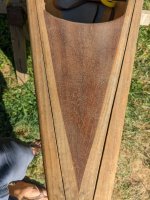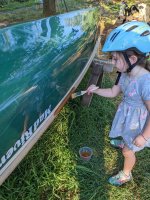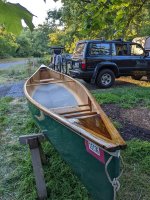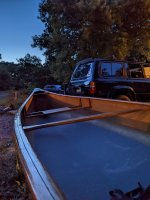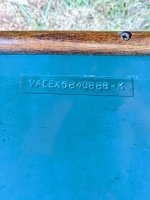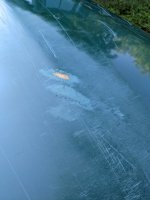Howdy. I picked this canoe up a week or so ago from a barn sale for a price I couldn't refuse. The wood appears solid although incredibly dry and after some white water web surfing, I determined that Watco exterior oil is a good option for this (if this is not a good idea, let me know!). Following the instructions on Mad River's site, I taped off the shiny bits and began gently sanding with 80 grit paper. Between the outer edge and the inner edge (gunwale and inwale) there appears to be a gap. Before I oil it, should something be in the gap or will the wood expand when it's hydrated?
Couple of quick pictures, it was disgusting when I brought it home. Covered in bird crap and barn dust. My trusty helper was up to the task of scrubbing it down prior to sanding.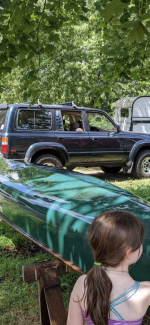
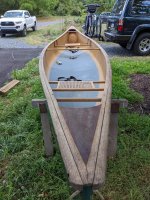
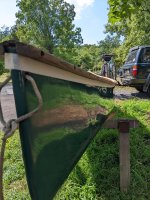 the gap.
the gap.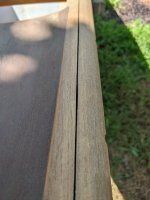
Couple of quick pictures, it was disgusting when I brought it home. Covered in bird crap and barn dust. My trusty helper was up to the task of scrubbing it down prior to sanding.


 the gap.
the gap.

